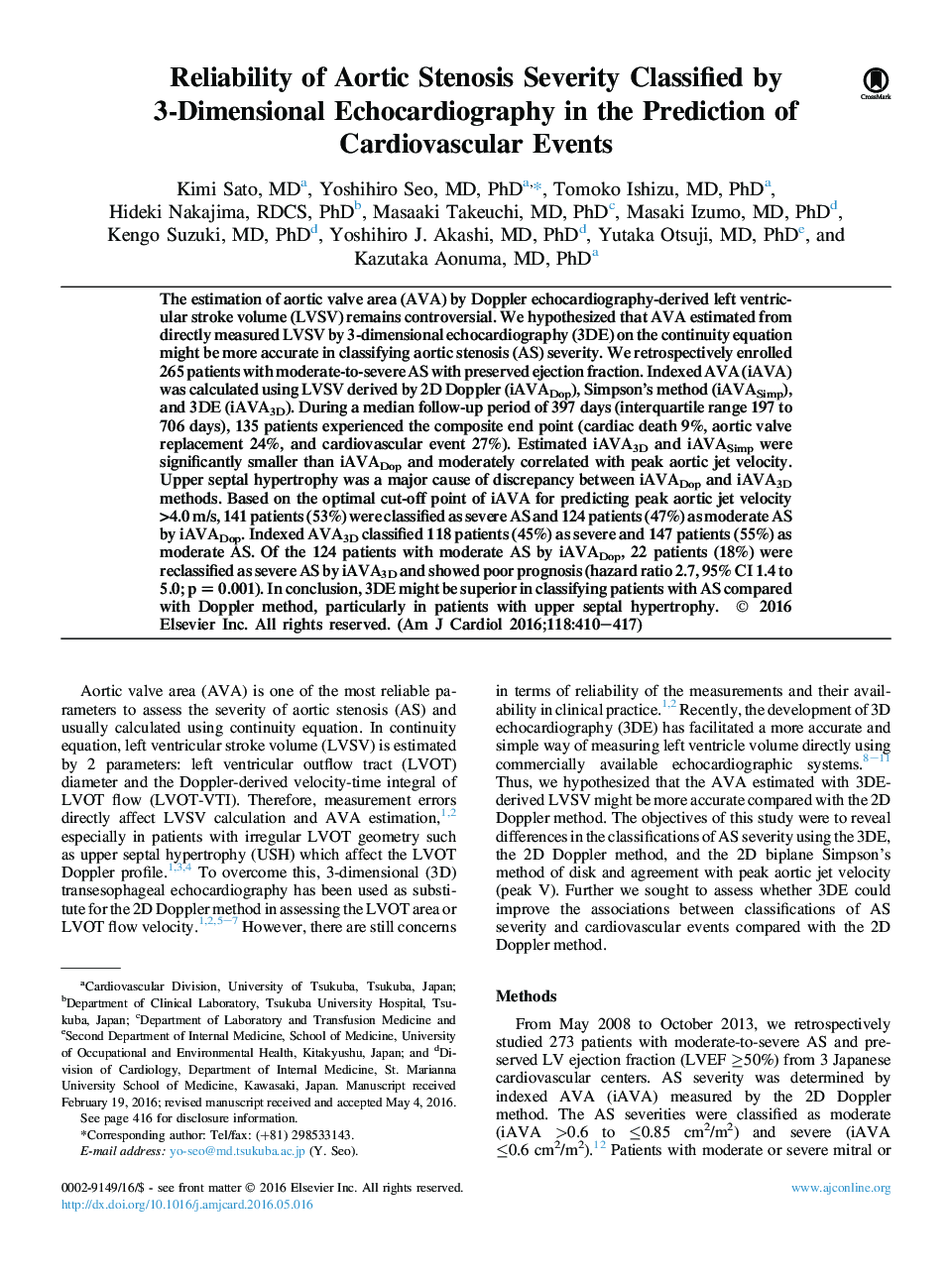| Article ID | Journal | Published Year | Pages | File Type |
|---|---|---|---|---|
| 5929538 | The American Journal of Cardiology | 2016 | 8 Pages |
The estimation of aortic valve area (AVA) by Doppler echocardiography-derived left ventricular stroke volume (LVSV) remains controversial. We hypothesized that AVA estimated from directly measured LVSV by 3-dimensional echocardiography (3DE) on the continuity equation might be more accurate in classifying aortic stenosis (AS) severity. We retrospectively enrolled 265 patients with moderate-to-severe AS with preserved ejection fraction. Indexed AVA (iAVA) was calculated using LVSV derived by 2D Doppler (iAVADop), Simpson's method (iAVASimp), and 3DE (iAVA3D). During a median follow-up period of 397 days (interquartile range 197 to 706 days), 135 patients experienced the composite end point (cardiac death 9%, aortic valve replacement 24%, and cardiovascular event 27%). Estimated iAVA3D and iAVASimp were significantly smaller than iAVADop and moderately correlated with peak aortic jet velocity. Upper septal hypertrophy was a major cause of discrepancy between iAVADop and iAVA3D methods. Based on the optimal cut-off point of iAVA for predicting peak aortic jet velocity >4.0 m/s, 141 patients (53%) were classified as severe AS and 124 patients (47%) as moderate AS by iAVADop. Indexed AVA3D classified 118 patients (45%) as severe and 147 patients (55%) as moderate AS. Of the 124 patients with moderate AS by iAVADop, 22 patients (18%) were reclassified as severe AS by iAVA3D and showed poor prognosis (hazard ratio 2.7, 95% CI 1.4 to 5.0; p = 0.001). In conclusion, 3DE might be superior in classifying patients with AS compared with Doppler method, particularly in patients with upper septal hypertrophy.
